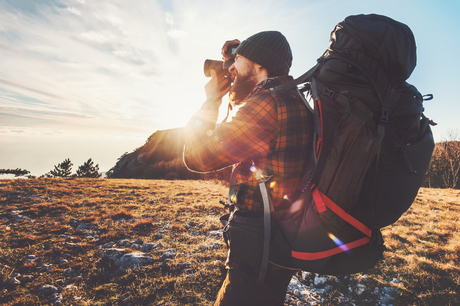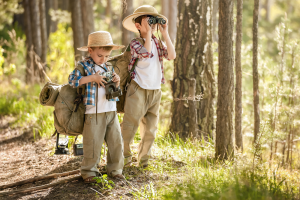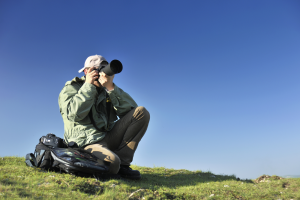There is an old saying that pictures are worth a thousand words. To those who love the outdoors, this saying means a whole lot to you. The photographs you take when out there are your souvenirs to remind you of the thrill and fun time you had once you are back home.
If you fancy the idea of coming back with an amazing collection of shots from hiking, or any other outdoor activity, then a camera comes in handy. For the best memories, you need the perfect outdoor camera to compliment your love for the outdoors.
Some people say that the quality of photographs taken does not depend on the camera but rather on the photographer. However, with modern cameras, you don’t have to be great at taking pics. But because of the numerous options available, making the right choice is always a tall order. With this camera buying guide for an outdoor enthusiast, making a purchase is made easier.

How to Choose the Best Outdoor Camera for You
1. The Camera Type
In most of the cases, this is the first decision that you will be faced with. The numerous types of cameras available are both a good and bad thing depending on how you look at it. There are the fancy DSRLS and then there are the simple point and shoots. In between, a bunch of them exist too.
The types of pictures you intend on taking determine to a great extent the type of camera to buy. One camera will be suitable in a specific condition as compared to the other one.
Point and Shoot
For the traveler who is just getting started, a point and shoot camera type is probably the best choice for an outdoor camera. They are lightweight (reduces the weight of your gear), affordable, easy to use, and easy to carry around.
Since you simply need to take them out, focus on an object and shoot, you are very likely to take more photos to remind yourself of the fun times. Their setup consists of a fixed lens that you won’t interchange. This lens can be retracted back and forth to make the camera more portable.
However, it is worth noting that they have flaws as well due to their simplicity. Of all the types, their sensors are one of the smallest. This flaw means the photo quality is not always as great as those of high-end cameras.
Another disadvantage in some of the models is the lack of controls for some of the settings. Their autofocus speeds are also slow and so is the lag time after pressing the shutter. If you are looking for a simple camera that’s easy to use, low cost and light, then this would be a great choice.
Digital Single Lens Reflex (DSLR) Camera

Unlike the point and shoot, the lens on this camera can be taken off and swapped with another one. And because they are fancy and big, these cameras tend to cost more than their counterparts. A mirror allows you to first of all compose the image before taking it. A more accurate shot is produced in the process.
Mirrorless Cameras
Digital photography has been revolutionized with the inception of mirrorless cameras. They are some of the best options when going outdoors if you want high-quality images when on the move.
Most of the time, the benefits are the same as those of the DSLR without a compromise on weight and price. The difference comes in with the absence of a mirror reflex optical viewfinder. Instead, an electronic one is used. The lenses can still be switched if you wish to.
These cameras are great for shooting in dim lighting conditions. They are still at a lower quality level when compared with the DSLR cameras.
Camera Phones
How about using your phone in place of a camera? Sounds like a good idea, right? These are the types mostly used by outdoor enthusiasts to capture the most amazing moments they encounter. Some may be of poor quality, but newer high-end phones have better clarity of images.
With these, you can even share the pictures with friends, the world and colleagues through social media platforms such as Instagram and other phone apps.
2. Camera Features
Cameras come with a number of different features. Some of these are cool, some are essential, while there are others you might end up never even using. For the features that really matter for an outdoor lover, here are some of the highlights you need to look out for.
Camera Modes

The first two are mainly for beginners while the manual mode is for those with experience in using cameras. These modes are used to select the camera ISO, aperture and shutter speed. In manual modes, you control these three by yourself hence better image control.
Look for the label M on the camera to know whether it has a manual mode or not. But generally, most of the DSLRs and mirrorless types have it. Few point and shoots have the feature.
Lens ISO Ratings
This is the feature that controls the sensitivity of the camera sensor to the light it is exposed to. By being able to increase the sensitivity of the sensor, you can shoot clearer images under low light without needing the flash.
Look for a camera with an ISO (International Standardization Organization) rating of 1,600 and above. You can even find those with an ISO of up to 102,000. There is a tradeoff that you should watch out for. Higher ISO leads to noise and grainier images.
Megapixels (MP)
This refers to the measure of the level of resolution a camera can give you. The higher the MP rating, the sharper the image and the greater the quality of the image captured.
3. Ergonomic Design
When buying a camera, you have to consider how it feels when held in your hands. When outdoors, you will have lots of moments to capture. Most probably, you will be capturing these moments most of the times. These features enhance an ergonomic design.
Ease of Use and Size
You need to be able to use the camera that you buy so that you can enjoy its full benefits. The buttons need to be reachable with ease. Figure this out by actually holding the camera in your hands before buying (if possible). It should not also be too heavy.
Durability
For your outdoor needs, a rugged camera design works best. The addition of weather sealing and magnesium alloy features inside the camera are a big plus. Generally, the camera should withstand occasional drops which are unavoidable.
4. Extra Features
These days, cameras come with all manner of features. Some have built-in Wi-Fi, touch screens, GPS, HD video shooting and so forth. Of course, you must already know that the extra features will cost you more.
Conclusion
When trying to buy a perfect outdoor camera for your outdoor picture capturing needs, you need to consider some of the essential features. Sensor sizes, the aperture range and a manual control of the camera are just some of them. In some cases, the cost plays in too, more so if you are on a tight budget. Lastly, you should be able to comfortably use the camera you intend on buying.

